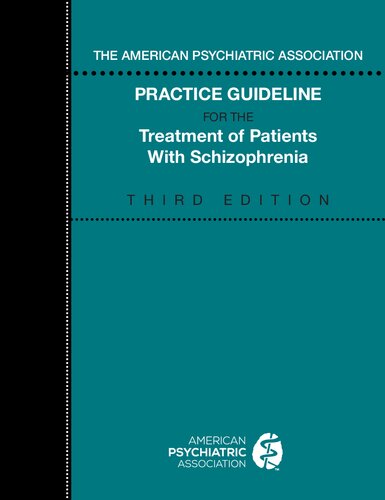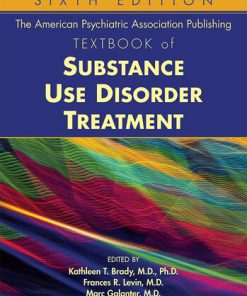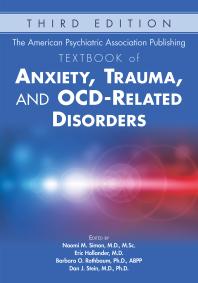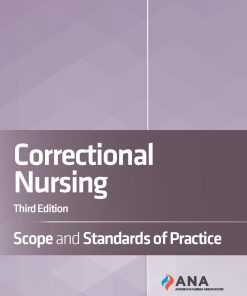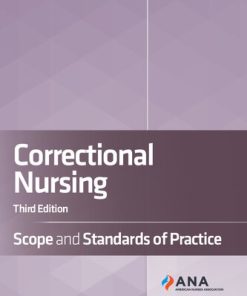The American Psychiatric Association practice guideline for the treatment of patients with schizophrenia Third Edition by American Psychiatric Association 9780890424742 0890424748
$50.00 Original price was: $50.00.$25.00Current price is: $25.00.
The American Psychiatric Association practice guideline for the treatment of patients with schizophrenia Third Edition American Psychiatric Association – Ebook Instant Download/Delivery ISBN(s): 9780890424698,9780890424742,0890424691,0890424748
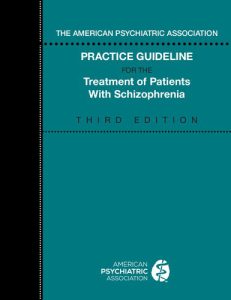
Product details:
- ISBN 10:0890424748
- ISBN 13:9780890424742
- Author: American Psychiatric Association
The American Psychiatric Association Practice Guideline for the Treatment of Patients with Schizophrenia
Worldwide, schizophrenia is one of the top 20 causes of disability. The lifetime prevalence of schizophrenia is estimated to be approximately 0.7%, although findings vary depending on the study location, demographic characteristics of the sample, the approach adopted for case finding, the method employed for diagnostic confirmation, and the diagnostic criteria used. Economic burdens associated with schizophrenia are high, with an estimated cost of more than $150 billion annually in the United States on the basis of 2013 data. Additional research since the second edition of the guideline has expanded our knowledge of the effective and evidence-based interventions available to help reduce the mortality, morbidity, and significant psychosocial and health consequences of this important psychiatric condition.
The American Psychiatric Association Practice Guideline for the Treatment of Patients With Schizophrenia seeks to reduce these substantial psychosocial and public health consequences for the individuals affected by schizophrenia. The guideline focuses specifically on evidence-based pharmacological and nonpharmacological treatments for schizophrenia and includes statements related to assessment and treatment planning, which are an integral part of patient-centered care. The guideline provides direction on implementing these recommendations into clinical practice, with the goal of improving the quality of care and treatment outcomes for patients with schizophrenia.
Table contents:
Statement 1: Assessment of Possible Schizophrenia
Implementation
Balancing of Potential Benefits and Harms in Rating the Strength of the Guideline Statement
Review of Available Guidelines From Other Organizations
Quality Measurement Considerations
Statement 2: Use of Quantitative Measures
Implementation
Balancing of Potential Benefits and Harms in Rating the Strength of the Guideline Statement
Review of Available Guidelines From Other Organizations
Quality Measurement Considerations
Statement 3: Evidence-Based Treatment Planning
Implementation
Balancing of Potential Benefits and Harms in Rating the Strength of the Guideline Statement
Review of Available Guidelines From Other Organizations
Quality Measurement Considerations
Pharmacotherapy
Statement 4: Antipsychotic Medications
Implementation
Balancing of Potential Benefits and Harms in Rating the Strength of the Guideline Statement
Review of Available Guidelines From Other Organizations
Quality Measurement Considerations
Statement 5: Continuing Medications
Implementation
Balancing of Potential Benefits and Harms in Rating the Strength of the Guideline Statement
Review of Available Guidelines From Other Organizations
Quality Measurement Considerations
Statement 6: Continuing the Same Medications
Implementation
Balancing of Potential Benefits and Harms in Rating the Strength of the Guideline Statement
Review of Available Guidelines From Other Organizations
Quality Measurement Considerations
Statement 7: Clozapine in Treatment-Resistant Schizophrenia
Implementation
Balancing of Potential Benefits and Harms in Rating the Strength of the Guideline Statement
Review of Available Guidelines From Other Organizations
Quality Measurement Considerations
Statement 8: Clozapine in Suicide Risk
Implementation
Balancing of Potential Benefits and Harms in Rating the Strength of the Guideline Statement
Review of Available Guidelines From Other Organizations
Quality Measurement Considerations
Statement 9: Clozapine in Aggressive Behavior
Implementation
Balancing of Potential Benefits and Harms in Rating the Strength of the Guideline Statement
Review of Available Guidelines From Other Organizations
Quality Measurement Considerations
Statement 10: Long-Acting Injectable Antipsychotic Medications
Implementation
Balancing of Potential Benefits and Harms in Rating the Strength of the Guideline Statement
Review of Available Guidelines From Other Organizations
Quality Measurement Considerations
Statement 11: Anticholinergic Medications for Acute Dystonia
Implementation
Balancing of Potential Benefits and Harms in Rating the Strength of the Guideline Statement
Review of Available Guidelines From Other Organizations
Quality Measurement Considerations
Statement 12: Treatments for Parkinsonism
Implementation
Balancing of Potential Benefits and Harms in Rating the Strength of the Guideline Statement
Review of Available Guidelines From Other Organizations
Quality Measurement Considerations
Statement 13: Treatments for Akathisia
Implementation
Balancing of Potential Benefits and Harms in Rating the Strength of the Guideline Statement
Review of Available Guidelines From Other Organizations
Quality Measurement Considerations
Statement 14: VMAT2 Medications for Tardive Dyskinesia
Implementation
Balancing of Potential Benefits and Harms in Rating the Strength of the Guideline Statement
Review of Available Guidelines From Other Organizations
Quality Measurement Considerations
Psychosocial Interventions
Statement 15: Coordinated Specialty Care Programs
Implementation
Balancing of Potential Benefits and Harms in Rating the Strength of the Guideline Statement
Review of Available Guidelines From Other Organizations
Quality Measurement Considerations
Statement 16: Cognitive-Behavioral Therapy
Implementation
Balancing of Potential Benefits and Harms in Rating the Strength of the Guideline Statement
Review of Available Guidelines From Other Organizations
Quality Measurement Considerations
Statement 17: Psychoeducation
Implementation
Balancing of Potential Benefits and Harms in Rating the Strength of the Guideline Statement
Review of Available Guidelines From Other Organizations
Quality Measurement Considerations
Statement 18: Supported Employment Services
Implementation
Balancing of Potential Benefits and Harms in Rating the Strength of the Guideline Statement
Review of Available Guidelines From Other Organizations
Quality Measurement Considerations
Statement 19: Assertive Community Treatment
Implementation
Balancing of Potential Benefits and Harms in Rating the Strength of the Guideline Statement
Review of Available Guidelines From Other Organizations
Quality Measurement Considerations
Statement 20: Family Interventions
Implementation
Balancing of Potential Benefits and Harms in Rating the Strength of the Guideline Statement
Review of Available Guidelines From Other Organizations
Quality Measurement Considerations
Statement 21: Self-Management Skills and Recovery-Focused Interventions
Implementation
Balancing of Potential Benefits and Harms in Rating the Strength of the Guideline Statement
Review of Available Guidelines From Other Organizations
Quality Measurement Considerations
Statement 22: Cognitive Remediation
Implementation
Balancing of Potential Benefits and Harms in Rating the Strength of the Guideline Statement
Review of Available Guidelines From Other Organizations
Quality Measurement Considerations
Statement 23: Social Skills Training
Implementation
Balancing of Potential Benefits and Harms in Rating the Strength of the Guideline Statement
Review of Available Guidelines From Other Organizations
Quality Measurement Considerations
Statement 24: Supportive Psychotherapy
Implementation
Balancing of Potential Benefits and Harms in Rating the Strength of the Guideline Statement
Review of Available Guidelines From Other Organizations
Quality Measurement Considerations
Areas for Further Research in Individuals With Schizophrenia
Guideline Development Process
Management of Potential Conflicts of Interest
Guideline Writing Group Composition
Systematic Review Methodology
Rating the Strength of Supporting Research Evidence
Rating the Strength of Guideline Statements
Use of Guidelines to Enhance Quality of Care
External Review
Funding and Approval
Glossary of Terms
References
People also search:
the american psychiatric association practice
american psychological association definition
american psychiatric association practice guidelines
american psychological association benefits
american psychiatric association membership benefits
You may also like…
Psychology - Clinical Psychology
Reference - Writing
Uncategorized
Psychology - Psychological Disorders
Psychology - Psychotherapy
Medicine - Psychiatry
Medicine - Psychiatry
Uncategorized
Correctional Nursing : Scope and Standards of Practice, Third Edition American Nurses Association
Uncategorized
Correctional Nursing : Scope and Standards of Practice Third Edition American Nurses Association.

